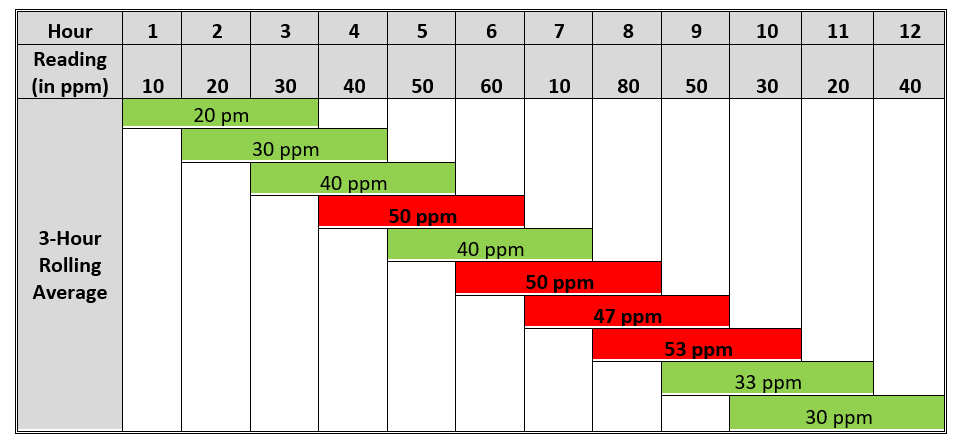New Jersey Department of Environmental Protection Continuous Emissions Monitoring Advisory
Posted: October 4th, 2021
Authors: Tom C.
On August 25, 2021, the New Jersey Department of Environmental Protection (NJDEP) issued a Compliance Advisory to facilities in the state that have an air permit that requires a Continuous Emissions Monitoring System (CEMS) with a 3-hour rolling average based on 1-hour blocks. NJDEP recognized that some facilities may have been reporting emissions in their Excess Emission Monitoring Performance Reports (EEMPRs) incorrectly and published additional guidance on how affected facilities can reprogram their Data Acquisition System (DAS) software to correctly reflect how those averages should be reported. NJDEP issued a grace period until March 22, 2022 for facilities to update their software for more accurate reporting.
What does that mean, exactly?
CEMS are designed to sample the air in a stack and analyze that air for the presence of certain substances, such as concentration of those substances in the units of parts per million (ppm). The measurements are used to quantify emissions. The system can contain multiple parts, but the part mentioned in the advisory, the DAS, is the part that records, computes, and reports the CEMS data. The Compliance Advisory recommends that anyone with a CEMS averaging period consisting of 3-hour rolling averages based on 1-hour blocks review your current DAS and determine if you are calculating and reporting exceedances correctly. A change or upgrade to your DAS software may be needed.
Let’s look at an example:
A facility has a limit of 45 ppm for a substance monitored by a CEMS. Each clock hour, the DAS records the emissions result sampled by the monitor. After 3 clock hours, the DAS outputs the 3-hour average emissions result, and then each clock hour after that the DAS adds the newest hourly block average reading and drops the oldest hourly block average reading, as illustrated below.

Although some of the individual hourly readings are higher than 45 ppm (Hours 5, 6, 8, and 9), an excess emissions incident does not occur unless the other readings in the same 3-hour block result in an average higher than 45 ppm. However, if the 3-hour average is above the threshold, then that must be reported on the facility’s EEMPRs.
Excess Emissions Monitoring and Performance Report
The EEMPR is a quarterly report to NJDEP that details excess emissions, among other information. The report must include the date, start time, stop time, duration, and average concentration of the emissions during the exceedance period. Using the example above, the EEMPR would include two reportable excess emission incidents. One exceedance from Hour 4 to Hour 6 with a 3-hour duration and a concentration of 50 ppm. Then, there was a second exceedance starting at Hour 6 and ending at Hour 10, including 3, 3-hour averaging blocks. The EEMPR would include that the exceedance started at Hour 6 and ended at Hour 10 with a 5-hour duration and a concentration of 50 ppm (average of 50 ppm + 47 ppm + 53 ppm). Several more examples of how NJDEP intends for facilities to file their EEMPRs can be found in their Technical Manual “3-Hour Rolling Average Based on 1-Hour Blocks”.
How do I get assistance complying with this Advisory?
ALL4 has a Continuous Monitoring Systems (CMS) group made up of consultants who are experienced in DAS implementation and optimization as well as all other aspects of CEMS data management including, but not limited to procurement assistance, initial certification and ongoing quality assurance, auditing, and training. If you aren’t sure that your facility’s CEMS is reporting data correctly, ALL4 can help make that determination and work with you to make any necessary changes. Contact Tom Cunningham at tcunningham@all4inc.com or at 610.422.1106 for any questions or help with this advisory.

